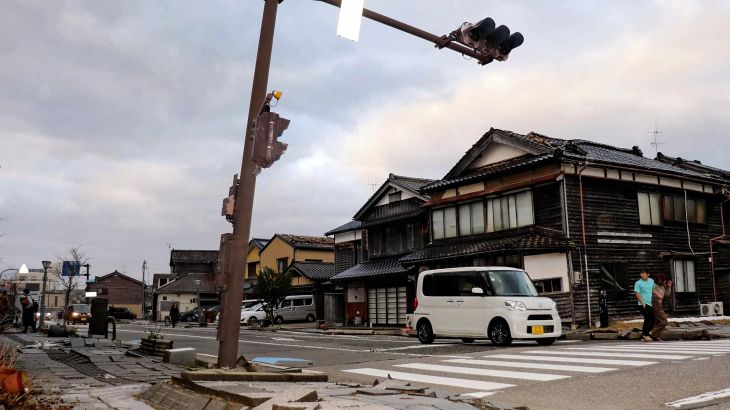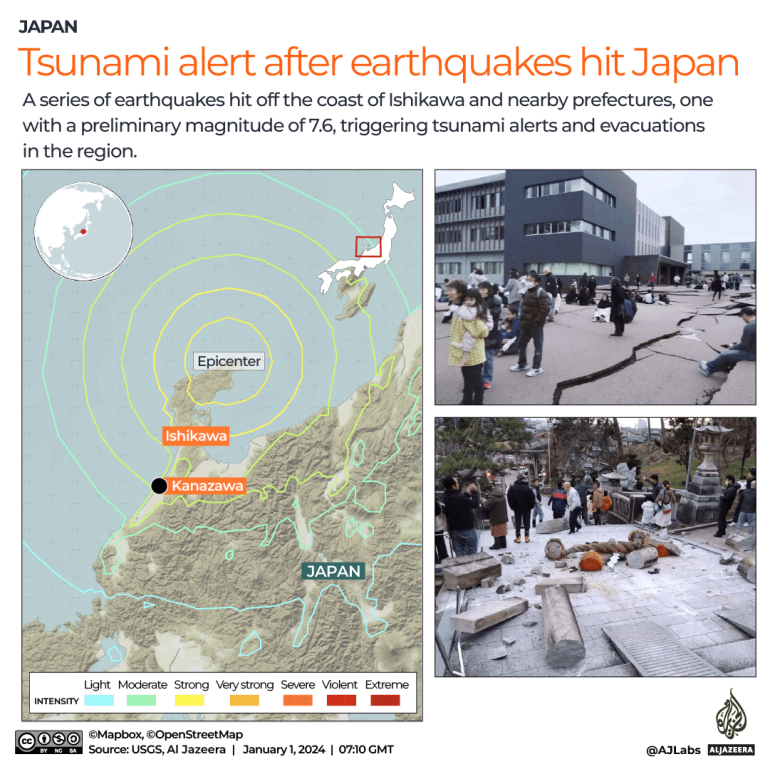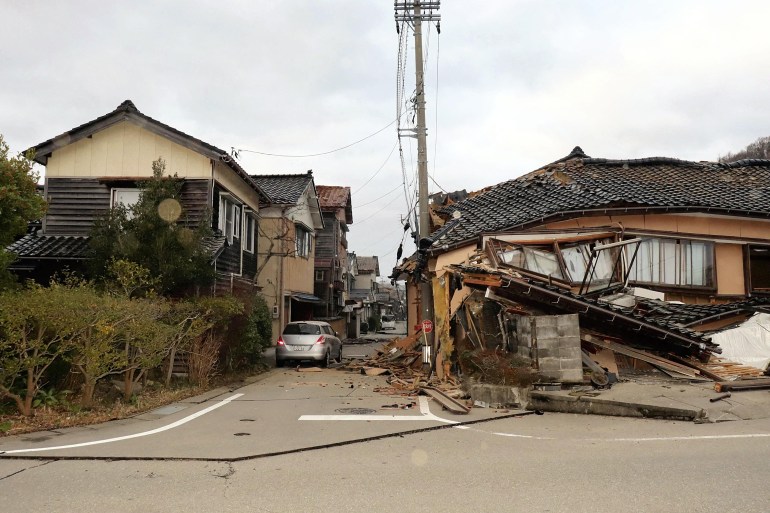Magnitude 7.6 earthquake strikes Japan, residents flee some coastal areas
Officials in Ishikawa prefecture confirm four fatalities, Kyodo news agency reports, as tens of thousands lose power.

A powerful earthquake has struck central Japan, killing several people, destroying buildings, knocking out power to tens of thousands of homes and prompting residents in some coastal areas to flee to higher ground.
Officials in Ishikawa prefecture confirmed four fatalities, the Kyodo news agency reported early on Tuesday.
Keep reading
list of 4 itemsOver 100 killed and hundreds injured in China earthquake
China’s Gansu earthquake kills more than 100 people: What to know
Photos: China shaken by the nation’s deadliest quake in a decade
The quake with a preliminary magnitude of 7.6 triggered waves of about 1m (3 feet) along Japan’s west coast and neighbouring South Korea on Monday, with authorities saying larger waves could follow.
The Japan Meteorological Agency (JMA) issued tsunami warnings for the prefectures of Ishikawa, Niigata and Toyama. A major tsunami warning – the first since the March 2011 earthquake and tsunami that struck northeastern Japan – was initially issued for Ishikawa but later downgraded and then cut to an advisory.

Russia and North Korea also issued tsunami warnings for some areas.
Japanese government spokesperson Yoshimasa Hayashi told reporters that the earthquake had caused several destroyed houses, and led to fires, and army personnel have been dispatched to help with rescue operations while authorities continue to assess the damage.
More strong quakes in the area, where seismic activity has been simmering for more than three years, could occur over coming days, JMA official Toshihiro Shimoyama said.
Japanese Prime Minister Fumio Kishida told reporters he had instructed search-and-rescue teams to do everything possible to save lives, even though access to quake-hit areas is difficult due to blocked roads.
Chris Gilbert, reporting from Tokyo, said authorities had located several people trapped.
“The government has identified at least six to 10 people trapped inside buildings and [the total] may be much higher than that, considering the government is usually quite conservative about these numbers until their official [final tally],” Gilbert said.

Footage aired by NHK appeared to show buildings collapsing in Ishikawa, and tremors shook buildings in the capital Tokyo on the opposite coast.
More than 36,000 households lost power in Ishikawa and Toyama prefectures, utilities provider Hokuriku Electric Power said.
Japan’s Nuclear Regulation Authority said no irregularities have been confirmed at nuclear power plants along the Sea of Japan, including five active reactors at Kansai Electric Power’s Ohi and Takahama plants in Fukui prefecture.
Hokuriku’s Shika plant in Ishikawa, located the closest to the quake’s epicentre, had already halted its two reactors before the quake for regular inspection and saw no impact from the quake, the agency said.
South Korea’s meteorological agency said the sea level in some parts of the Gangwon province on the east coast may rise.
Japan is one of the countries in the world most at risk from earthquakes. A huge earthquake and tsunami struck northeastern Japan on March 11, 2011, killing nearly 20,000 people, devastating towns and triggering nuclear meltdowns in Fukushima.